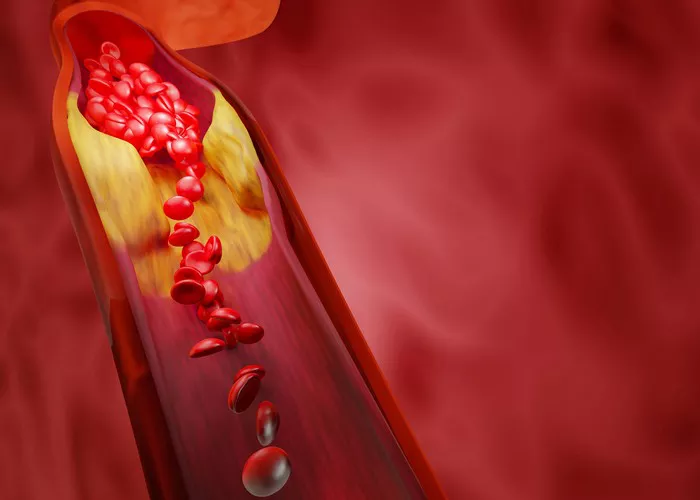Hyperlipidemia, a condition characterized by elevated levels of lipids in the blood, poses a significant risk factor for cardiovascular disease, the leading cause of death globally. This detailed exploration provides insights into the types, causes, physiological effects, diagnostic criteria, and current management strategies for hyperlipidemia. By understanding the underlying mechanisms and adopting evidence-based interventions, individuals and healthcare providers can effectively mitigate the risks associated with this prevalent condition.
Hyperlipidemia, or high blood cholesterol, is a condition that has become increasingly prevalent worldwide, contributing significantly to the global burden of cardiovascular disease (CVD). It is characterized by elevated levels of lipids—fats or fatty substances, including cholesterol and triglycerides—in the bloodstream. These lipid abnormalities can lead to the development of atherosclerosis, a condition where plaque builds up inside the arteries, potentially leading to heart attack, stroke, and peripheral vascular disease. Understanding the types, causes, and implications of hyperlipidemia is crucial for effective prevention, diagnosis, and management.
The Biology of Lipids and Their Role in the Body
Lipids play essential roles in the body, serving as energy sources, components of cell membranes, and precursors for synthesizing hormones. However, an imbalance in lipid levels can lead to detrimental health effects. This section would delve into the types of lipids found in the human body, including low-density lipoprotein (LDL), high-density lipoprotein (HDL), triglycerides, and their roles in physiological processes.
Types of Hyperlipidemia
Hyperlipidemia can be classified into several types based on the specific lipid profile abnormality. These include:
- Primary hyperlipidemia: Often genetic in nature, affecting the metabolism of lipoproteins.
- Secondary hyperlipidemia: Resulting from lifestyle factors or other conditions such as diabetes, obesity, and hypothyroidism.
Each type has distinct causes, implications, and management strategies, which will be explored in detail.
Causes and Risk Factors
While genetic predisposition plays a crucial role in primary hyperlipidemia, lifestyle factors such as diet, physical inactivity, alcohol consumption, and smoking significantly contribute to secondary hyperlipidemia. Understanding these risk factors is pivotal in developing effective prevention and management strategies.
Pathophysiology of Hyperlipidemia
The pathophysiological mechanisms of hyperlipidemia involve the complex interplay between lipid metabolism and transport processes. Dysregulation in these processes can lead to the accumulation of lipids in the blood, promoting the formation of atherosclerotic plaques. This section would explore the molecular and cellular mechanisms underlying hyperlipidemia and its progression to cardiovascular disease.
Diagnostic Criteria
Diagnosing hyperlipidemia involves evaluating the lipid profile through blood tests, typically measuring total cholesterol, LDL, HDL, and triglycerides. This section would detail the thresholds for normal and elevated lipid levels, as well as the significance of each lipid component in the diagnosis and risk assessment of cardiovascular disease.
Management and Treatment
Effective management of hyperlipidemia includes a combination of lifestyle modifications and pharmacological interventions. Lifestyle changes such as diet, physical activity, and smoking cessation are fundamental in managing mild to moderate hyperlipidemia. For individuals at high risk of cardiovascular disease or those with severe hyperlipidemia, pharmacological treatments, including statins, fibrates, and niacin, may be necessary.
- Lifestyle Modifications: Detailed strategies for dietary changes, exercise, and other lifestyle adjustments.
- Pharmacological Treatments: Overview of the different classes of lipid-lowering medications, their mechanisms of action, benefits, and potential side effects.
Prevention Strategies
Preventing hyperlipidemia involves addressing modifiable risk factors through public health interventions and individual lifestyle changes. This section would outline effective prevention strategies, including dietary guidelines, physical activity recommendations, and initiatives to reduce smoking and alcohol consumption.
Future Directions in Hyperlipidemia Research
Emerging research in the field of lipidology and cardiovascular disease is exploring novel therapeutic targets and interventions for hyperlipidemia. Advances in genetics, molecular biology, and pharmacology hold promise for more effective and personalized management strategies. This section would highlight current research trends and potential future developments in the prevention and treatment of hyperlipidemia.
Conclusion
Hyperlipidemia is a complex condition with significant implications for cardiovascular health. Understanding its types, causes, and effects is essential for effective management and prevention. Through a combination of lifestyle interventions and pharmacological treatments, individuals can significantly reduce their risk of developing cardiovascular disease associated with hyperlipidemia. Continued research and innovation are crucial in advancing our understanding and management of this condition, offering hope for more effective solutions in the future.

